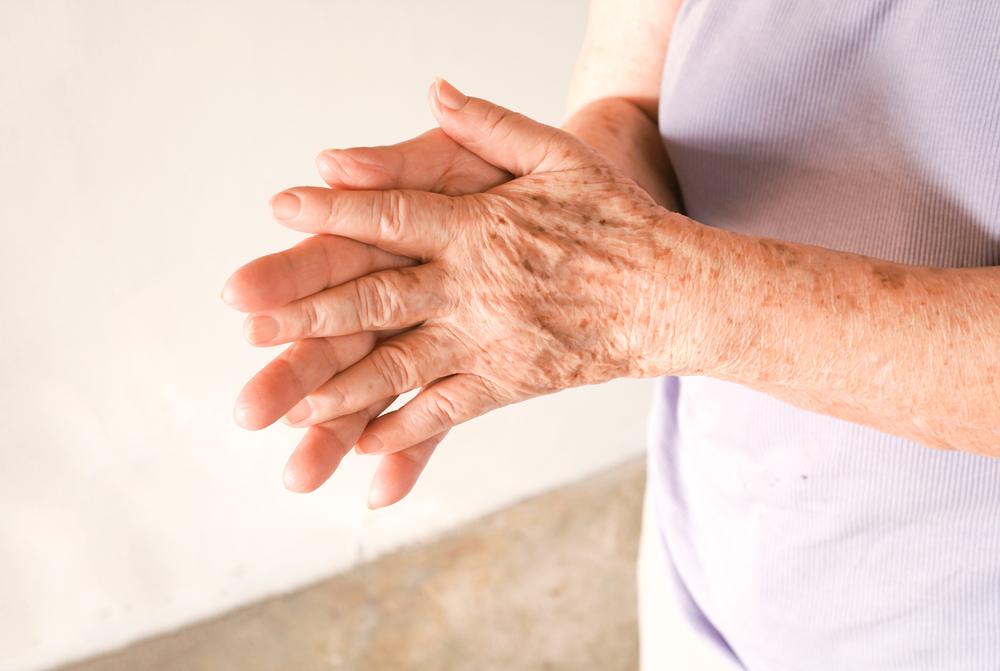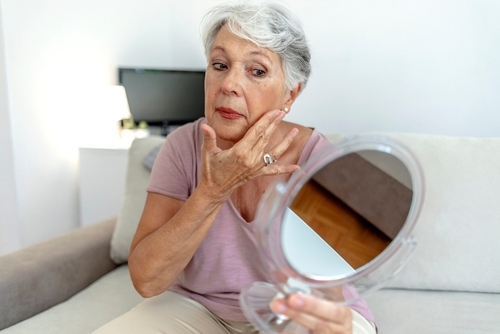Age Spot vs Melanoma: Can Age Spots Become Cancerous?
Category:

Age spots are patches of small, flat dots seen on parts of the skin that are often exposed to sunlight. Also known as liver spots or sunspots — seeing these new brown spots on our skin, seemingly out of nowhere, can be alarming. If you’re noticing dark spots appearing on your senior’s skin, you may be wondering if you’re looking at an age spot or melanoma, a dangerous form of skin cancer.
In this post, we’ll teach you how to identify the difference between signs of age spots vs skin cancer and answer common questions like: Can Age Spots Become Cancerous?
Age Spots and Skin Cancer
Age spots aren’t inherently dangerous, but they are a sign your senior may be spending too much time in the sun unprotected. Although they aren’t a cause for concern on their own, age spots are an attempt by our skin to protect itself from sun damage.
Signs of age spots include:
- Oval shaped spots that range in color from pink or tan to dark brown.
- Spots are usually seen grouped together in areas that see a lot of sun exposure. As a result, they are especially common on the hands, face, shoulders and upper back.
- Spots will appear to be larger than freckles and should be smooth, flat, and painless.
- Unlike freckles, which fade with no sun exposure, age spots don’t fade on their own over time.
If your seniors are developing new brown spots on their skin, they likely need to use more sunscreen when outside or spend less time in the sun altogether to avoid the risk of further damage, including more serious conditions like melanoma.
Melanoma or Sunspot?
Though they may look similar to the untrained eye, the signs of age spots vs melanoma should be easy to identify. If you are concerned about a new spot on your skin, you can run through the ABCs of melanoma:
- Asymmetry – one side of the growth is typically larger than the other.
- Border – an irregular border, as opposed to the more standard oval shape observed in age spots.
- Color – spots caused by melanoma can change color over time. Growths that are black or more than one color should be evaluated by a medical professional.
- Diameter – melanoma spots tend to be larger in diameter than a pencil eraser. However, Wolf warns that smaller spots can still be problematic.
- Evolution – sudden changes, bleeding, itching, or pain are all signs that your spot warrants a trip to the dermatologist
Download Our FREE Path to Care Guide
Can Age Spots Become Cancerous?
Having lots of age spots doesn’t make you more likely to develop melanoma, according to Susan Massick, M.D., an associate professor of dermatology at The Ohio State University College of Medicine in Columbus.
Massick explains that even though age spots don’t become cancerous, they may occur on the same area of the skin, leading some to believe that an age spot has turned into melanoma. She also points out that some types of melanomas may appear as if they are “underneath” an age spot, so even if the two aren’t naturally related, any major changes to your skin warrant a visit to your dermatologist.
To learn more about our home care services, contact our caregiving team today at 1-800-GRISWOLD or find a Caregiver near you.
Subscribe
Date: 2024-08-13
Category:


